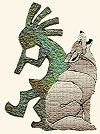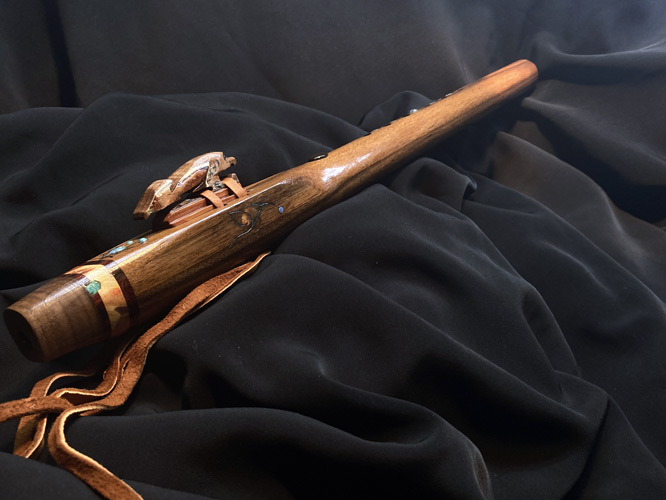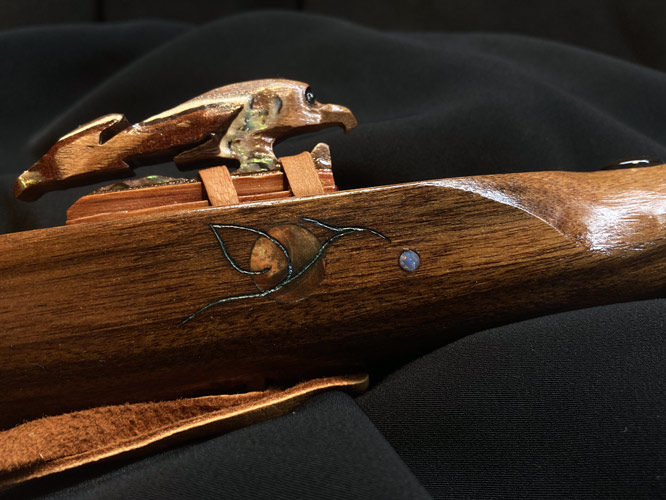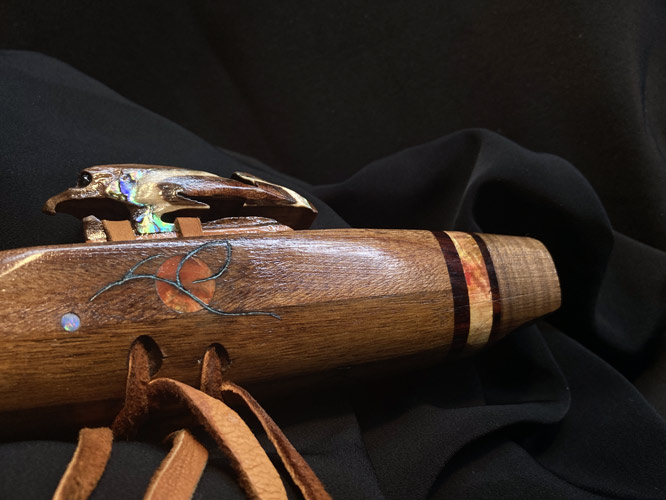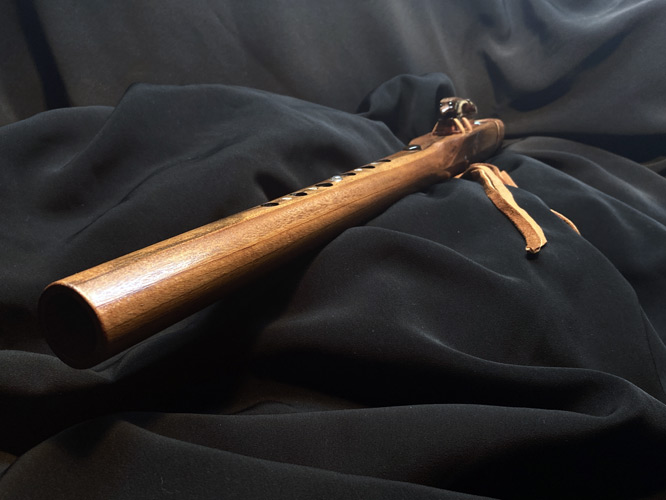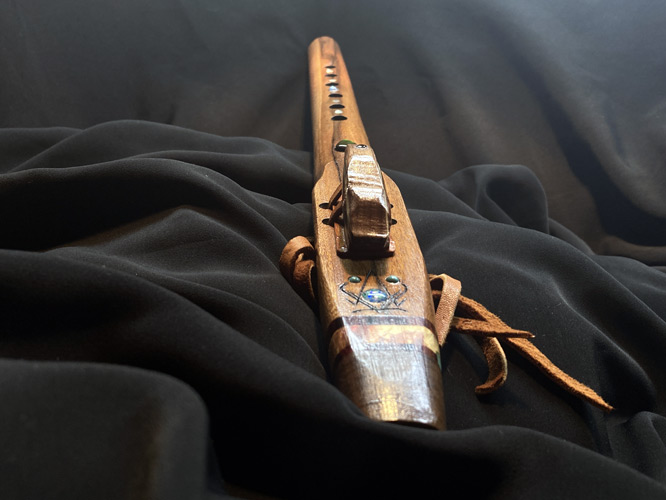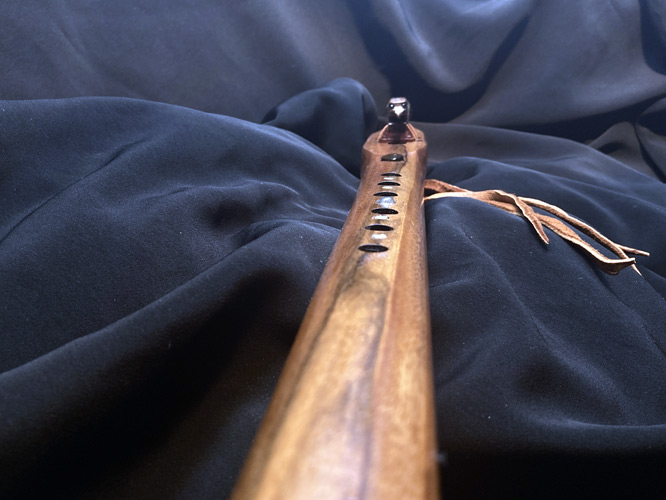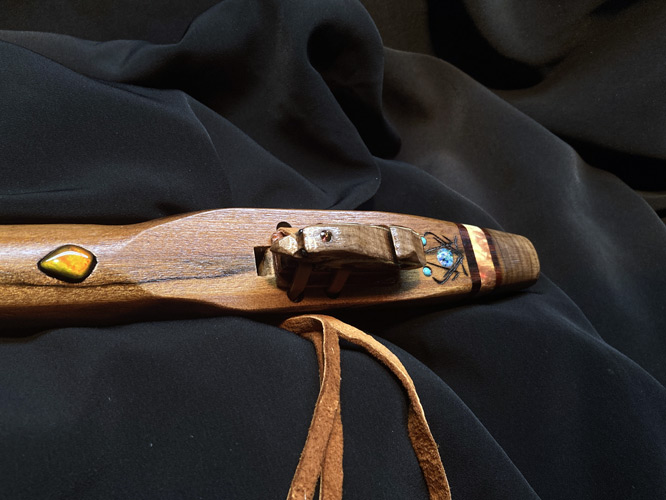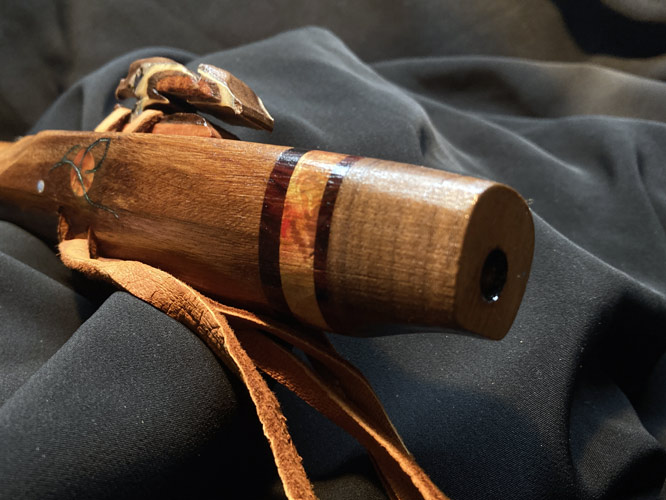$535.00
FREE DOMESTIC SHIPPING
Huangana Negra G#m
1 in stock
I’ll say it again. This Peruvian hardwood is one of my 4 favorite flute tone woods, I’m the only builder in the world crafting flutes from this material, according to Dr. Google. Tuned to G#m, it has an overall length of 19”, with a bore diameter of 7/8”.
Woods used in the build, beginning at the mouthpiece, include dyed/stabilized box elderl burl, with subtle hand colorizing. This is sandwiched between two layers of cocobolo, and capped with the huangana negra. Each side of the compression is accented with 13mm disks of the box elder used at the mouthpiece, among other things. The fetish block is cut from the huangana negra, and bonded to a base of Oklahoma red cedar for moisture control. The wing overlay for this bird includes paua abalone, mappa burl, Virginia walnut burl, tiger makore and figured anigre.
Inlay, again from the mouthpiece includes an 8mm round opal triplet, flanked by 4mm turquoise dots. The compression chamber, in addition to the disks is accented with pyrographics, backfilled with powdered turquoise from the Sleeping Beauty Mine in Globe AZ. This design also includes a pair of 3.6mm Australian fire opal doublets. Moving to the sound chamber, A stunning 12x15mm diamond cut ammolite has been inlayed. This organic gemstone is between 70-130 million years old, and is from the Alberta/Bearclaw formation. There was an inland sea extending from Canada to New Mexico and this cephalopod lived in the shallows of that sea on the East side of the Rocky Mountains. Ammolite is mined from the underside of the shell of the Ammonite, and according to the International Gem Society, …..is rarer than diamonds. This particular specimen is rarer still, as it holds it’s iridescent display at any angle. Moving further South. The finger holes are accented with four 4mm abalone dots, and a 6mm dome cut round labradorite cabochon. Lastly, the fetish block is set with a 4mm faceted Brazilian azotic topaz to the crown, and 2.8mm hematite beads, set as eyes…..as a final note, the void in the burl at the mouthpiece was filled with Sleeping Beauty mine turquoise powder.
For drying purposes, it is unnecessary to remove the block altogether. Simply loosen the ties and gently pull it to the side for overnight drying. Should you remove it completely, a toothpick should be used to coax the deerskin ties back through the channels, to avoid damage to them.
………The flute was tuned at a wood temp. of 77.2°F, with an ambient temp. of 71.8°F….a humidity factor of 34%, at sea level.
1 in stock
